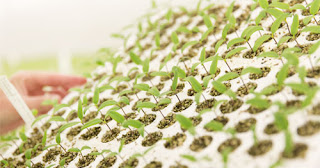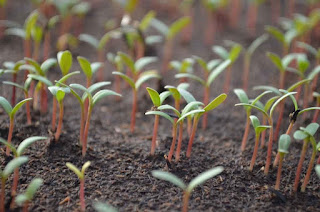Four effective seed enhancement methods
Physiological, logistical, and ecological-environmental factors have been attributed to the high failure rates associated with seed-based restoration. Low seed viability, dormancy, limited emergence, variation in seed size and morphology, and variegation in environmental conditions are all factors that pose challenges. Researchers and developers are urgently needed to develop seed enhancement technologies (which can be artificially treated so that seeds can germinate and establish on demand), a step that can improve the quality, reliability, and deliverability of native seed batches and make them more resilient to environmental stresses, such as moisture and temperature extremes, and ecological challenges.
Due to a variety of reasons, seed enhancement technologies have
received limited attention in ecological restoration, including high initial
equipment costs and difficulties scaling the process. Nevertheless, such
technologies are common in the supply chains for crop and horticulture seeds as
their benefits far outweigh their costs. Recent years have seen the development
of seed enhancement technology for
ecological recovery, which has potential benefits if the technologies can be
optimized and scaled up effectively.
An overview of seed enhancement technologies developed
in agriculture (seed priming and seed coating) will be presented in this
review, and examples of how these technologies have been applied to ecological
restoration will be provided.
Priming the seeds
Pre-sowing treatment, and seed priming, create a
physiological state that promotes good germination. The majority of seed
treatments involve seed imbibition, which allows seeds to go through the first
reversible germination stage without radical protrusion through the seed coat.
Dehydrated seeds may be stored until sowing if they have maintained their
desiccation tolerance. As a result of primed seeds, subsequent germination is
faster and more synchronized, and young seedlings often show greater vigour and
resistance to abiotic stresses than seedlings obtained from unprimed seeds.
Often, the seed is primed by soaking it in predetermined amounts of water or by
limiting the imbibition time. Osmopriming refers to the process of regulating
the imbibition rate by osmotic agents such as PEG.
A halo priming depends on the use of salts, whereas a
halo priming uses plant growth regulators. The improvement of germination is
also achieved with some physical treatments (UV, cold, etc.), thus suggesting
that priming effects are not always associated with seed imbibition. This
simple and cheap technology can be used in a more efficient way if a better
understanding of the metabolic events occurring during extended priming and subsequent germination is acquired.
Hormone-
or chemo-primed
It is possible to improve seed
germination of dormant species, control germination timing to optimise
recruitment, and protect seeds from biotic and abiotic stresses using
germination promoters (e.g. cytokinins), inhibitors (e.g. ABA), or plant
protective compounds (e.g. salicylic acid, fungicides).
Osmo-Priming
The osmo-priming technique uses
a solution of osmoticum at a water potential below 0 MPa to allow for
controlled hydration of seedlings.se of salts (e.g. KNO 3, NaCl, CuSO 4),
polyethylene glycol (PEG), or mannitol (C 6H 14O 6) .
Matrix
Priming
A solid substrate (e.g.,
compost, clay, peat, sand, or vermiculite) moistened with water can also be
used to prime seeds. In some cases, matrix priming may be more effective than
osmotic extended priming, probably
because it simulates natural seedbed conditions and oxygen is readily available
to seeds throughout extended priming.
There has been evidence of matrix priming's positive effects on both
horticultural and wild plant species germination and emergence, and it may be
incorporated with other seed technologies.
Conclusion
For large-scale restoration
using direct seeding to be successful, seeds must be used efficiently and
effectively. Even though seed enhancement technologies are in their infancy,
they will probably provide significant improvements in field establishment
similar to what has been achieved for crop species. Various seed treatments can
be used to accelerate, delay, or stagger emergence and germination in the
field, but the effects need to be adjusted according to the site and local
climatic conditions. There should be no indiscriminate use of these treatments
for the sake of novelty, but they should have a proven benefit with a
deployment strategy that addresses specific ecological or logistical
limitations so that each seed has the greatest opportunity for germination,
emergence, and successful establishment.
Research and implementation programs that
focus on understanding and addressing the species- and site-specific challenges
that limit seedling germination are critical to the effectiveness of seed
enhancement technologies. The use of
seed enhancement technologies must more fully integrate issues related to
site conditions, species availability, and species performance into a broader
restoration strategy.



Comments
Post a Comment